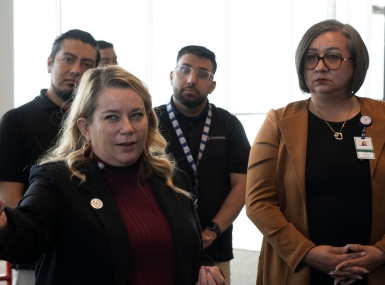NACo releases new resource on SNAP
Upcoming Events
Related News

Key Takeaways
NACo has released a new analysis of the Supplemental Nutrition Assistance Program (SNAP) provisions included in the House- and Senate-passed farm bill reauthorizations.
Learn More
NACo’s analysis explains the differences between the two chambers’ reauthorization bills as they relate to SNAP and the potential impacts these provisions could have on counties. SNAP is a public assistance program offering nutrition support to eligible low-income individuals and families. The program currently serves 42 million residents across the nation and accounts for 80 percent of spending in the farm bill.
Following passage of farm bill reauthorization legislation, the House named 47 Republicans and Democrats to serve on a conference committee to reconcile differences between the House and Senate proposals. Senate leadership had been expected to select its own conferees in the next several days, but the process stalled after members failed to reach consensus on amendments to the farm bill. Once the House and Senate come to an agreement on the farm bill legislation, both chambers must then pass the new version of the bill before it can be sent to the president for his signature.
Although SNAP is primarily a partnership between the federal government and states, 10 states delegate SNAP administration directly to county agencies, which covers services for 31 percent of all program recipients.
Attachments
Related News

HRSA offers funds to aid care transitions for justice-involved individuals
On April 10, the U.S. Department of Health and Human Services’ Health Resources and Services Administration (HRSA) announced the availability of $51 million in funding opportunities open to HRSA-funded health centers. HRSA-funded health centers, which serve over 30 million patients, play a crucial role in county healthcare systems emphasizing equity and accessibility in healthcare. This new initiative focuses on supporting individuals leaving incarceration by providing health services during the critical 90 days before release, assisting justice-impacted individuals with their return to the community by expanding access to primary healthcare—including mental health and substance use disorder treatment.

L.A. County fends off homelessness with an assist from A.I.
A predictive model pulls data from six county departments to create a list of the county’s most vulnerable population — people who frequently show up in the county’s criminal justice and hospital systems and who access benefits like SNAP.

El Paso County, Texas helps migrants on their way
Though they don't often stay more than a day, asylum seekers receive care and services from El Paso County, Texas before they leave for their next destination.